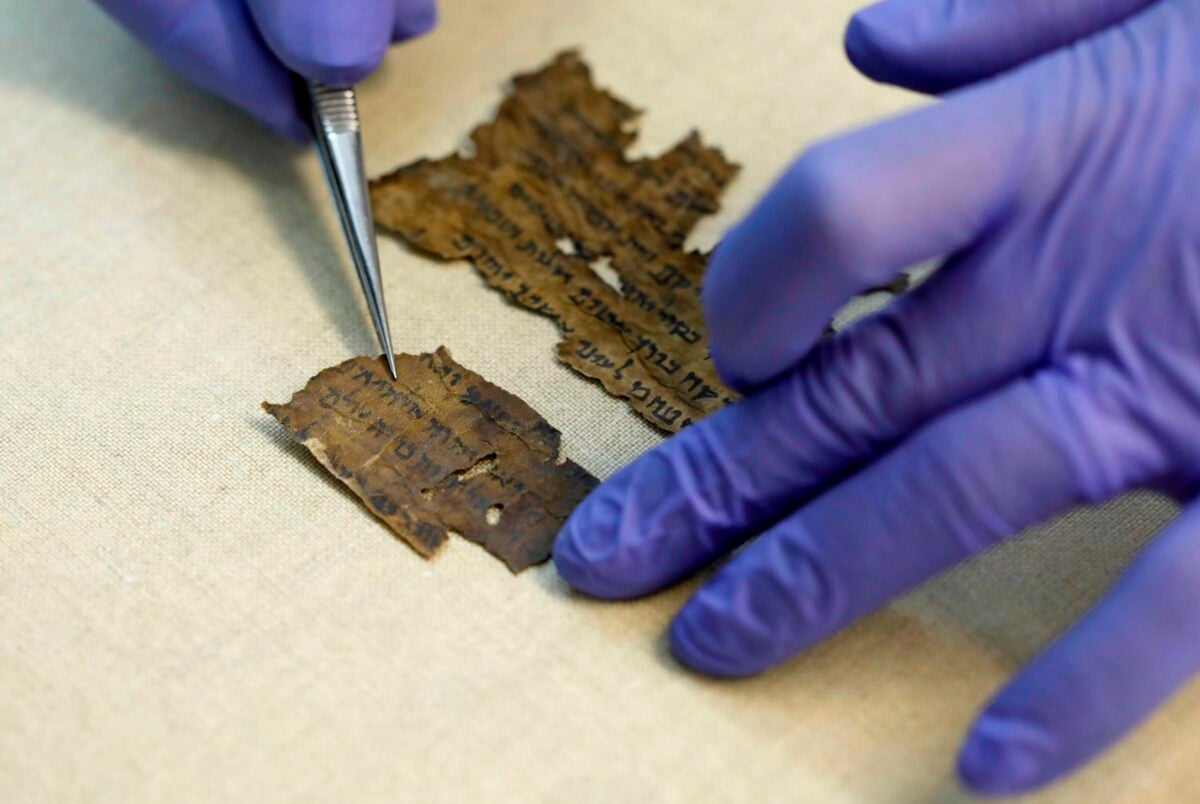The Dead Sea Scrolls are one of archaeology’s greatest discoveries and most enduring mysteries, but thanks to a seven-year study using DNA testing, we are learning more about the ancient Jewish religious manuscripts that have captivated the world. Since their discovery in the Qumran Caves in 1946, archaeologists and religious scholars have worked to piece together over 25,000 fragments, which comprise some of the oldest copies of the Hebrew bible.
A new study from Cell titled “Illuminating Genetic Mysteries of the Dead Sea Scrolls” is using ancient animal DNA testing in an attempt to “fingerprint” the fragments of the 2,000-year-old scrolls. An estimated 85-90 percent of the scrolls were written on vellum, which is a type of parchment made from animal hide (the remaining 10-15 percent were written on papyrus). By sequencing the genetics of the animal hides, scientists can track both the origins of the disparate scrolls and how they piece together.
Assembling the pieces of the scrolls is a more than challenging task. The excavation of the scrolls took place in 11 different caves in the Judaean Desert over the course of nearly 15 years. There wasn’t much order to the excavation, and many pieces were misplaced, stolen, and passed through the hands of countless individuals over the years.
Oded Rechavi, one of the study’s authors—molecular biologist and associate professor in the School for Neurobiology, Biochemistry and Biophysics in the George S. Wise Faculty of Life Sciences and Sagol School of Neuroscience of Tel Aviv University in Israel—described the difficulties in assembling the scrolls in a statement, saying, “First, most of them were not found intact but rather disintegrated into thousands of fragments, which had to be sorted and pieced together, with no prior knowledge on how many pieces have been lost forever, or — in the case of non-biblical compositions — how the original text should read. Depending on the classification of each fragment, the interpretation of any given text could change dramatically.”
The team found disparities in versions of the book of Jeremiah, made up of two fragments that were thought to be connected but have now been revealed to come from different materials: sheepskin and cow hide. Does that mean that these pieces don’t, in fact, connect? And what does that mean in terms of our interpretations of these manuscripts?
Noam Mizrahi, study co-author and an associate professor in Tel Aviv University’s department of biblical studies, said, “Analysis of the text found on these Jeremiah pieces suggests that they not only belong to different scrolls, they also represent different versions of the prophetic book, … The fact that the scrolls that are most divergent textually are also made of a different animal species is indicative that they originate at a different provenance.”
These discoveries show us that different versions and wordings of the book of the Jeremiah were likely circulated throughout ancient Judea, and that the collective body we know as the Dead Sea Scrolls came from different regions across the area. It also indicates that the Hebrew bible underwent different versions and evolved in real time as the manuscripts were shared and passed around. The testing can also be used to reveal whether fragments of the scrolls are fakes or forgeries.
Mizrahi added, “It is remarkable that we were able to retrieve enough authentic ancient animal DNA from some of these 2,000 year old fragments considering the tough history of the animal hides … They were processed into parchment, used in a rough environment, left for two millennia, and then finally handled by humans again when they were rediscovered.”
He continued, “Our research enabled us to shed new light on many old mysteries basically by allowing the materiality of the scrolls to speak for its own right — and it has surprisingly a lot to tell us.”
(via CNN, image: MENAHEM KAHANA/AFP via Getty Images)
Want more stories like this? Become a subscriber and support the site!
—The Mary Sue has a strict comment policy that forbids, but is not limited to, personal insults toward anyone, hate speech, and trolling.—










Published: Jun 2, 2020 03:06 pm